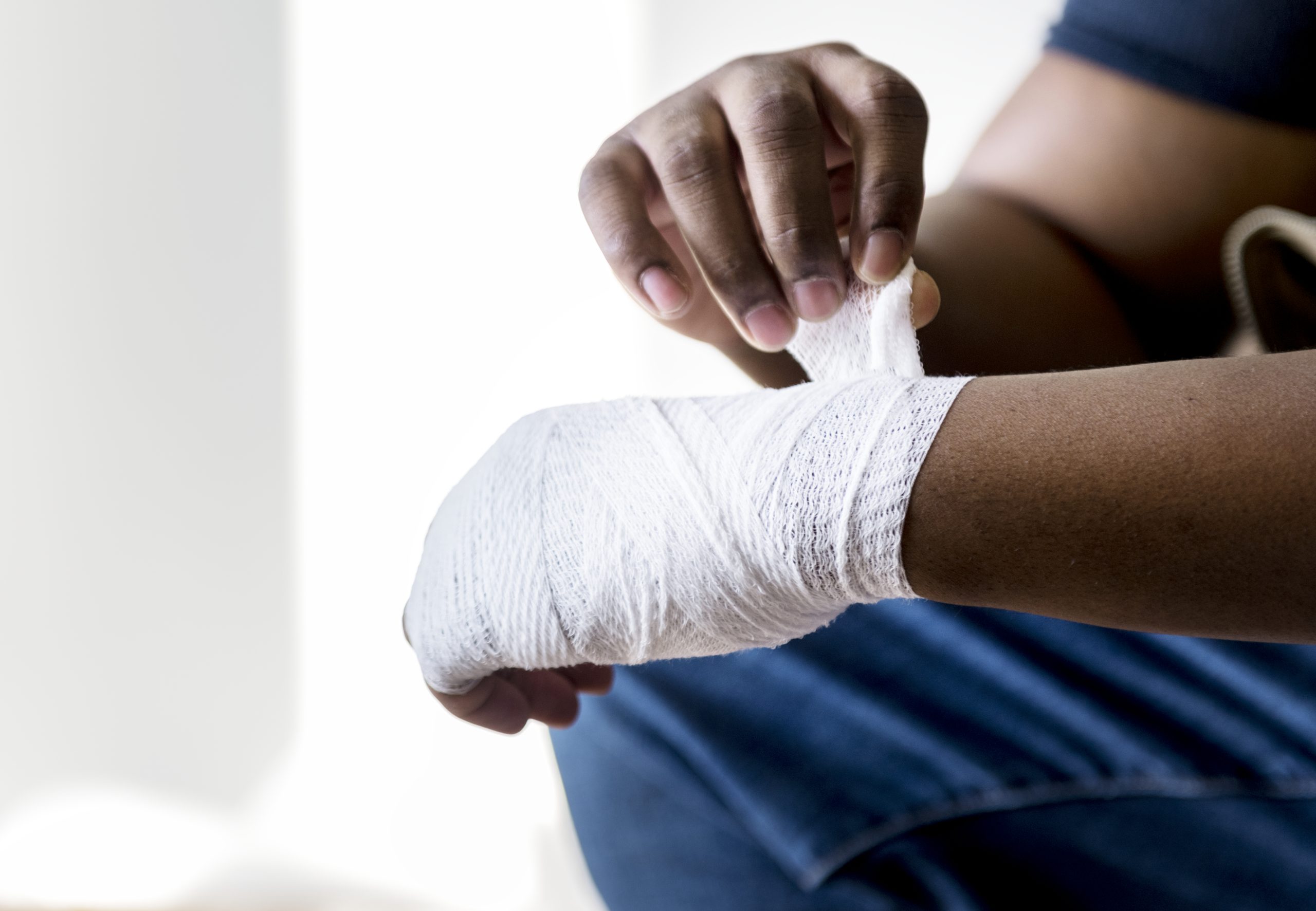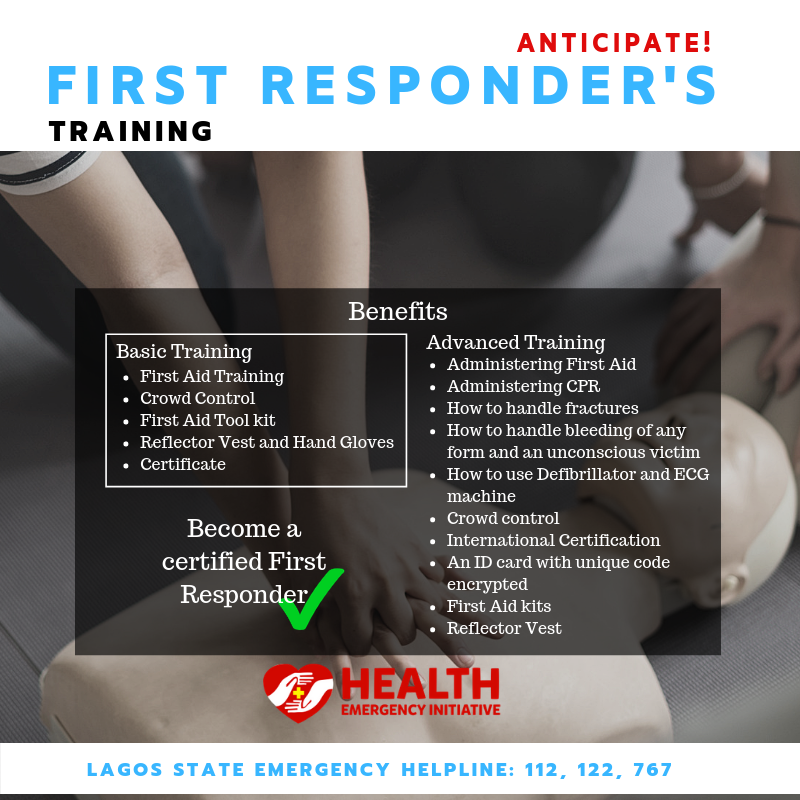Introduction
Dressing a wound for the first time can be nerve-wracking. How do you know when you’ve cleaned and dressed it sufficiently?
Fortunately, anyone can learn how to care for a patient with a wound. Whether it’s a minor cut or a severe injury, you can follow some basic steps to help prevent infection and further complications.
At Health Emergency Initiative (HEI), we empower individuals with the knowledge and skills to provide essential first aid, including wound care, to save lives.
Understanding Wound Types

Before diving into wound care, you should be familiar with the types of wounds you might encounter. Wounds are first classified in one of two ways–open or closed. Both can cause external bleeding, internal bleeding and/or both. This bleeding can be life-threatening or non-life-threatening.
Open wounds can be further categorized into four major types:
- Abrasion: A scrape or graze that removes the top layer of skin
- Laceration: A deep cut or tear in the skin, often caused by a sharp object
- Avulsion: A wound where the skin and underlying tissue are torn away
- Puncture: A small, deep hole, often caused by a sharp object
Most wounds are caused by falls, sharp objects or car accidents.
How to Administer First Aid: Wounds
Knowing how to administer first aid for wounds can be life-saving.
Remember: If the wound is severe, call for emergency medical help immediately–especially if the wound is large or deep, bleeds heavily (or for more than 20 minutes), or contains dirt or a foreign object.
While waiting for help, dress the wound as best as you can.
- Assess the situation: Before providing first aid, assess the situation to make sure you and the patient are safe and out of harm’s way.
- Wash your hands: Clean your hands thoroughly with soap and water, or use an alcohol-based hand sanitizer to avoid potential contamination or infection.
- Elevate the wound: If possible, elevate the wounded area above the heart to reduce bleeding and swelling.
- Stop the bleeding: Apply gentle pressure to the wound using a clean towel, cloth or bandage to stem the bleeding. Hold it there until the bleeding stops.
- Clean the wound: Rinse the wound under clean, running, lukewarm water to wash away any debris (e.g., dirt). Avoid applying harsh antiseptics directly on the wound, as they can damage tissue.
- Pad any embedded object(s), so they stay in place: If the wound has an embedded object (e.g., a knife or nail), gently position bandages or padding around it, so it does not twist or move. Whatever you do, do not remove the object, as it could result in significant blood loss and nerve damage. In addition, do not apply pressure on it or attempt to cut it away, unless clinically trained.
- Reattach the skin flap: If a skin flap is still attached, gently reposition it back over the wound using a moist cotton cloth or pad. This helps cover exposed tissues, reducing the risk of infection, and facilitates the natural healing process.
- Dry the wound: Gently dry the wound and surrounding skin by patting it with a clean towel or cloth. Because moisture can create an ideal environment for bacteria, dry it as much as possible.
- Apply an antibiotic ointment: If available, use an antibiotic ointment to prevent infection.
- Cover the wound: Use a sterile, non-stick bandage or dressing to cover the wound. Change the dressing daily or if it becomes wet or dirty.
- Monitor for infection: Watch out for any potential signs of infection, such as redness, swelling, pain, heat, strange odors and/or excess fluid (e.g., pus) coming from the wound. Also, be on alert if it is taking longer than a month to heal. If any of these symptoms arise, seek medical attention immediately.
How to Administer First Aid: Bruises
In addition to wounds, learning how to treat bruises can accelerate their healing process. While most heal on their own within a few days to weeks, you can alleviate the pain through the following steps:
- Apply a cold pack: Wrap a cold pack or ice in a thin, dry towel, and apply it to the bruised area for 10-20 minutes. Repeat until the pain is alleviated.
- Apply a compression bandage (for larger bruises): Applying a compression bandage to larger bruisers can help reduce swelling and support the injured area. Use an elastic bandage to wrap and “compress” the bruised area.
- Apply heat: After at least 48 hours, apply a warm compress or heating pad to the bruised area for 20 minutes. Repeat as necessary.
Learning First Aid with Health Emergency Initiative
At HEI, we believe in the power of knowledge in emergency response and preparedness. Our First Responders training includes First Aid training, CPR training and additional essential skills to empower community members to handle emergencies effectively.
By following the steps outlined above and staying prepared, you can make a significant difference in saving lives.
For more information about HEI’s First Aid training programs and initiatives, visit: https://hei.org.ng/get-involved.


